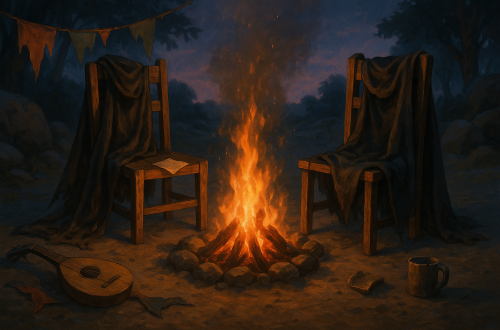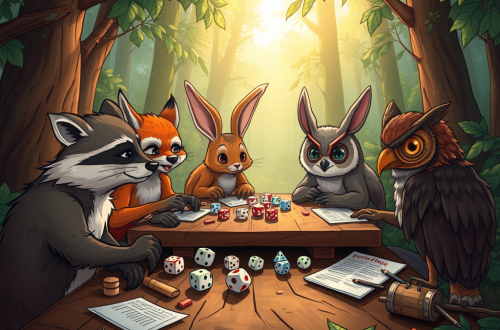Session Zero: Expectations and Contingencies
No one likes to talk about it at the beginning. It feels like tempting fate, like naming your ship “Unsinkable.” But just as campaigns take time to build, they also face wear and tear. Characters die. Players move. Sessions get cancelled. And sooner or later, someone is going to say, “Sorry, I can’t make it tonight,” just as the necromancer’s ritual begins.
That’s why it’s crucial to talk about expectations and contingencies before the adventure starts. Not in a doom-and-gloom way, but with the same care you give to story arcs and safety tools. This isn’t about predicting disaster. It’s about being ready to adapt as a group.
Start with Scheduling
We touched on this in a previous post, but now I will elaborate.
Agree on how often you want to play, and just as importantly, what happens when someone can’t make it. Do you cancel? Play on? Run a side-quest? Will characters be played by the GM, fade into the background, or wander mysteriously off-screen with vague mutterings about “urgent business in the south”? If Gandalf can go on a research sabbatical, so can you!
No answer is wrong, but picking one in advance saves awkwardness later. If you’re all hoping for a long-term, high-commitment campaign, that’s great—but say it out loud. If folks are aiming for something casual or episodic, that’s fine too, as long as everyone knows what they’re signing up for.
When a Character Dies (or Leaves)
Death in TTRPGs can be dramatic, tragic, hilarious, or all three—but how your table handles it says a lot about your group dynamic. Is character death a regular possibility, or something rare and narratively significant? Can players reroll and jump back in, or do they sit out until the next arc?
It’s also worth talking about what happens if a player wants to retire their character or introduce someone new. Transitions can be graceful or chaotic, but a little planning helps avoid the dreaded “Why is there suddenly a monk in our submarine campaign?” moment.
Campaign Drift and Player Burnout
Campaigns evolve. Sometimes they become something unexpected—and sometimes they fizzle. Players get busy. GMs get tired. The tone changes. That’s okay.
The important thing is to leave space for open, honest check-ins. Every few sessions, ask how people are feeling about the game. Is everyone still enjoying themselves? Are characters still fulfilling, or has someone quietly realized they built a moody loner and now regrets it?
No table is immune to burnout, but a little reflection now and then can help you course-correct, even if that means taking a break or ending the story with a satisfying, intentional finale.
And Then There’s The End
Most campaigns don’t get a perfect, wrapped-up ending. They fade, they stall, or they get put on indefinite hiatus. Sometimes everyone dies. But some do make it to the finish line—and even those that don’t can still have a satisfying ending if you build in the expectation that campaigns do come to an end.
Ask your players: How would they like this campaign to finish, if it had to? What’s the endgame? A final battle? A character’s redemption? A heist so audacious it becomes legend? Planting this idea early doesn’t lock you in—it gives you a North Star, even if the winds change.
Final Thoughts: Roll with It
Session Zero isn’t just for dreaming up characters and choosing goblin dialects. It’s about preparing for the unpredictable nature of collaborative play. By talking about expectations now—scheduling, absences, death, endings—you’re giving your campaign room to breathe and evolve.
Because even the best-planned adventure will eventually take a turn. And when it does, your table will already have the one thing more powerful than plot armour: a shared understanding of how to roll with it.




